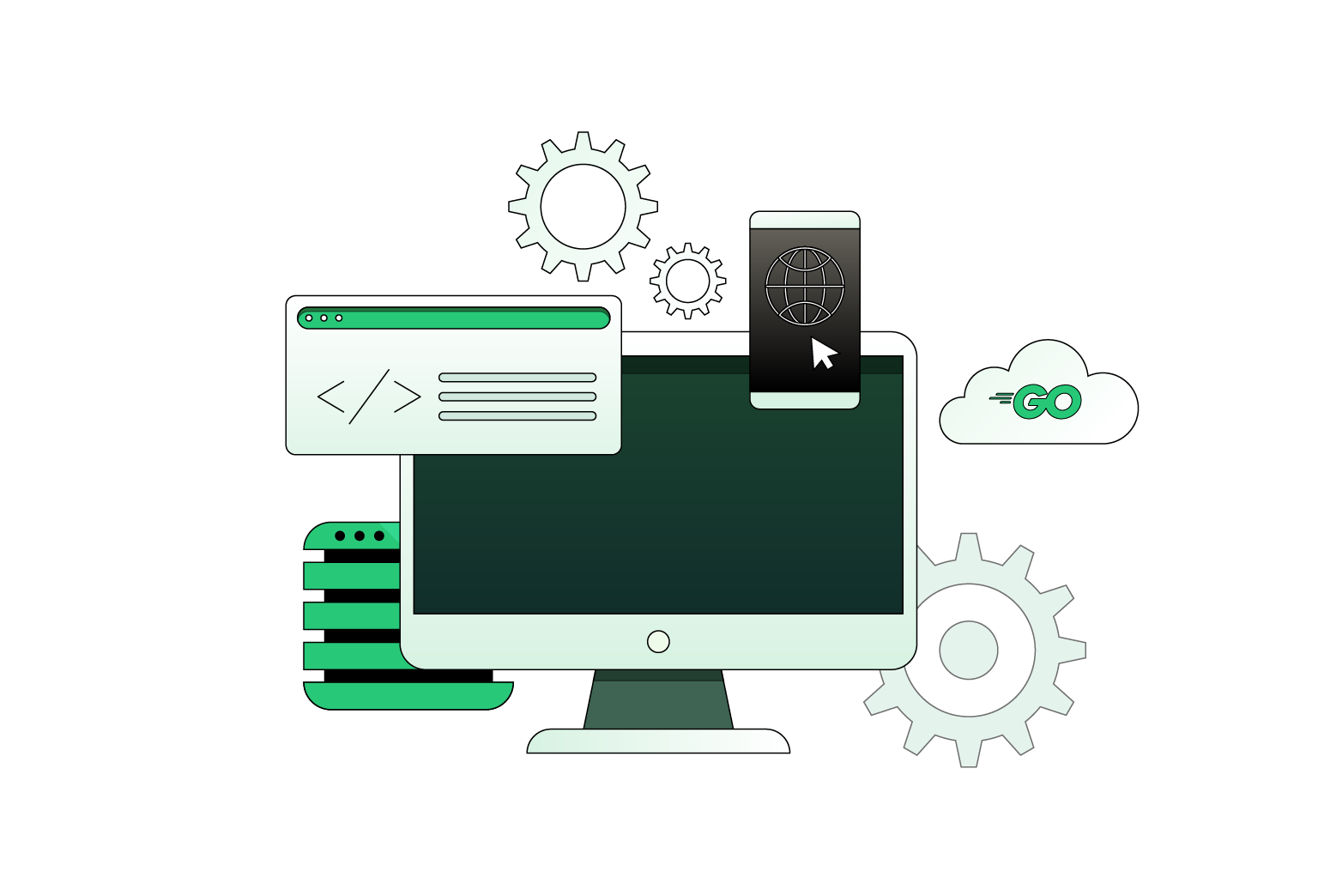Exploring the Nexus of Cloud Native Golang for Hyper-Scalable Application Ecosystems
Building scalable and resilient applications has come to depend intensely on Cloud Native architecture. The necessity to take advantage of the cost-effectiveness, scalability, and adaptability given by cloud computing environments is driving this change in outlook. Perceiving that customary methods of software development and deployment are much of the time insufficient to satisfy the needs of the dynamic and highly distributed computing environment of today lies at the center of this advancement.

The three guiding concepts of Cloud Native Golang development are automation, scalability, and agility. It involves something other than moving programs to the cloud; it involves a comprehensive rethinking of the conception, creation, deployment, and administration of applications inside a cloud-native ecosystem. Containerization, microservices architecture, dynamic orchestration, and DevOps techniques are significant features of cloud-native applications.
Golang, also known as Go, is one of the programming languages that has become exceptionally famous in the Go Cloud Native space. Google made Go with concurrency, proficiency, and user-friendliness at the top of the priority list. Because of its strong yet straightforward syntax and coordinated support for concurrent programming, it’s an incredible decision for creating cloud-native apps that can oversee weighty workloads while using not many resources.
It becomes significant in this context to understand Golang’s capability in cloud-native development. While starting a cloud-native project, developers should understand the basics of Golang as well as how to use it to make architectures that are robust and scalable. Golang provides a solid foundation for creating cloud-native apps that can flourish in powerful, distributed environments, from overseeing concurrent requests to enhancing resource use. We will investigate essential ideas, industry best practices, and how to take advantage of Golang’s advantages to make scalable, successful, and solid cloud-native applications all through this investigation of Cloud Native Golang development.
The Meteoric Advantages of Leveraging Go for Cloud-Native Applications
Go is eminent for its quick execution and compilation times. In the cloud-native environment, where applications must scale quickly and handle enormous loads effectively, this proficiency is essential. A quicker development cycle is also worked with by the shorter compilation time. Because Go supports concurrency natively through goroutines and channels, it’s the ideal language to use while creating applications that need to deal with different tasks at once. This is especially useful for Go Cloud Native apps where workload distribution and scaling are standard needs. Go programs function admirably in containerized environments and microservices architectures because they normally use less memory and system resources than programs written in some different languages.
Go builds into a single binary that is statically linked. This eliminates the requirement for runtime installations and external dependencies, making organization and distribution in containerized environments simple. A comprehensive standard library for Go is incorporated, containing packages for file manipulation, network communication, and other uses. As a result, there might be less need to depend on third-party libraries, which would streamline development and lower the attack surface. Go comes with an incorporated testing framework that simplifies the process of making unit tests for your code. For Golang Cloud Native applications to be dependable and viable, this is crucial.
Working in various cloud environments requires support for different operating systems and architectures, which is something that Go offers. Your applications can be deployed to different cloud providers more easily because of this cross-platform similarity. Go has great integrations with compartment orchestration systems like Kubernetes and containerization technologies like Docker. This is essential for large-scale cloud-native application deployment and management. Go’s low resource consumption and concurrency model makes it a fantastic decision for creating scalable microservices. To deal with various portions of the responsibility for your application, you can quickly spawn and oversee goroutines.
Go’s error-handling methodology makes troubleshooting and error management in distributed systems easier by using explicit error return values. Go encourages safe coding practices and lowers the risk of normal vulnerabilities like support overflows with its memory safety features. Go comes with extraordinary tools for profiling and monitoring apps, which facilitates performance diagnosis and optimization in cloud-native environments.
Soar to New Heights with Golang Cloud Native Tools and Technologies
Composing effective code is just a single aspect of Cloud Native Golang development; another is using various tools and technologies designed for contemporary cloud setups. With the guidance of these tools, developers can make, carry out, and keep up with scalable applications effortlessly. For Golang developers, the accompanying cloud-native tools and technologies are paramount:

Scalable and distributed databases are frequently required by Golang Cloud Native applications to oversee massive information volumes. Distributed, profoundly accessible storage options are accessible for Golang applications easily on account of technologies like Amazon DynamoDB, Google Cloud Spanner, or open-source solutions like CockroachDB. To ensure high performance and data consistency, they give features like multi-region replication, elastic scaling, and automatic sharding.
The unwavering quality of cloud-native infrastructure depends on visibility into application wellbeing and execution. Prometheus, Grafana, and ELK Stack (Elasticsearch, Logstash, Kibana) are a couple of examples of tools that deal with logging, monitoring, and visualization features. Libraries like Prometheus client for Go permit Golang developers to instrument their code and screen metrics like request latency, error rates, and resource usage in real-time progressively.
In cloud-native development, automation of the build, test, and organization processes is essential to accomplishing unwavering quality and dexterity. CI/Disc pipelines permit developers to automate deployment workflows, testing, and code quality checks. These pipelines are facilitated by tools such as Jenkins, GitLab CI/CD, or GitHub Actions. These tools, related to containerization platforms such as Docker and Kubernetes, empower Golang developers to quickly and dependably convey their applications. Through the reception of these Go Cloud Native tools and technologies, Golang developers can increase overall application scalability, improve development workflows, and upgrade by and large dependability in present-day cloud environments.
Golang’s Navigational Guide to Cloud-Native Best Practices for Revolutionary Applications
Following a few best practices will assist you with building Cloud Native Golang applications that are scalable, reliable, and maintainable. Use design patterns, such as the Singleton pattern, to effectively manage global resources. Using patterns such as the Factory pattern, you can assist your application’s architecture with turning out to be more adaptable by empowering dynamic object creation based on requirements. By plainly characterizing the boundaries and APIs between microservices, you can decouple services. This encourages measured quality, which makes it simpler to scale and update specific parts of the system without influencing the entirety.
Use external storage options, such as distributed caching systems or databases, for stateful services. Preserve stateless services to limit dependencies and streamline scalability. Use Go’s built-in concurrency features, such as channels and goroutines, to function admirably. Use worker pools and synchronization techniques to deal with various tasks immediately. To deal with exceptions and failures with grace, execute strong error-handling mechanisms. To keep your application stable, use defer statements and Go’s error interface for resource cleanup.
Put in a compartment Docker is used by Golang Cloud Native applications to give consistent deployment environments. Apply orchestration tools such as Kubernetes to deal with containers, scale apps powerfully, and ensure high accessibility. Use frameworks for following application execution, recognizing anomalies, and proactive troubleshooting, such as Prometheus, Grafana, or ELK stack. To secure sensitive information and stop unwanted access, maintain security best practices including encryption, verification, and approval systems. Update libraries and dependencies oftentimes to fix security flaws. Conduct thorough end-to-end, integration, and unit tests to check the way of behaving of your application. Make pipelines for continuous combination to automate deployment, testing, and code quality checks.
The Pattem Digital Advantage in Elevating Golang to Cloud-Native Excellence for Limitless Application Growth
Using Go (Golang) and embracing cloud-native techniques can extraordinarily work on the performance and scalability of contemporary applications. We’ve taken a gander at the fundamentals of cloud-native architecture, inspected the scalability and concurrency features of Golang, and discussed the best ways to make scalable applications. As innovation develops from here on out, CI/CD pipeline optimization, cloud-native tool integration, and security prioritization will stay basic. Using these approaches guarantees powerful use of resources as well as speeds up sending and scalability, empowering developers to build future-proof and strong cloud-native solutions.
Pattem Digital’s in-depth knowledge of cloud-native architectures sets us apart in offering superb Golang development services. Our strengths lie in making scalable applications, using the concurrency features of Golang, and streamlining execution for cloud settings. We constantly surpass client expectations in Golang development projects because of our dedication to best practices, progressing learning, and providing creative solutions.





